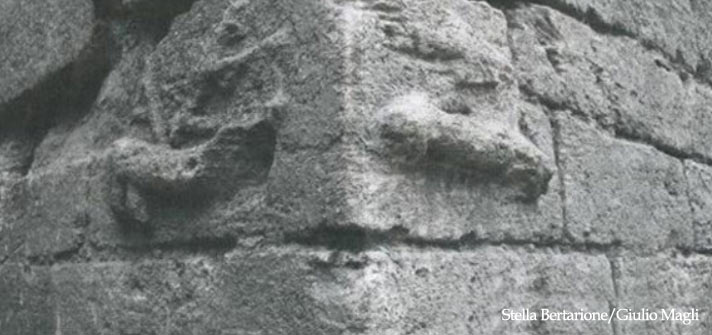Phalli engraving on 2,000-year-old stone reveals birth date of Italian city
Archaeologists have found a 2,000-year old stone with two penises engraved on it, as well as the Capricorn zodiac sign, in the city of Aosta in northern Italy. The phalli may shed light on the foundation of the city of Aosta, revealing its deep connection with the Roman emperor Augustus.
Augustus was the first emperor of Rome, who ruled from 27 BC until his death in 14 AD. He replaced the Roman republic with an effective monarchy and during his long reign brought peace and stability. He is well-known for having fought to avenge the murder of Julius Caesar and in 31BC defeated Antony and Cleopatra at the Battle of Actium to become the undisputed ruler of Rome.
The city of Aosta was once named Augusta Praetoria Salassorum by the Romans, who captured it from the local Salassi people in 25 B.C., and boasts several monuments dedicated to Augustus.
The elaborately carved stone uncovered in Aosta was buried under 5 feet of mud but would have once stood in public view on the southeast corner of a monument known as Balivi Tower. It is likely that it became buried before the medieval ages – the phallic figures would have been removed during that era as they were considered to be obscene pagan symbols.
The discovered engraving “reveals the city was built under Augustus’ sign during the winter solstice,” said Giulio Magli, professor of archaeoastronomy at Milan's Polytechnic University. Related to the god Priapus, the phallic effigies most likely had an “apotropaic” function, evoking some sort of protection from evil forces.
An analysis revealed that the two phalli point to the southeast, where the sun rises in the winter, and Aosta’s orientation is to the sun rising on the winter solstice. "We can estimate that the foundation of Aosta began on Dec. 23. On that day, the sun raises right in the direction pointed by the phalli on the stone," said Stella Bertarione, the archaeologist who made the discovery.
At those times, the winter solstice was indeed hosted by the sign of Capricorn, which Augustus had chosen as his emblem, as it was the sign of his conception, and which was also engraved on the stone. According to Magli, Augustus would have chosen the sign to “signify the new golden era of peace and prosperity."



















